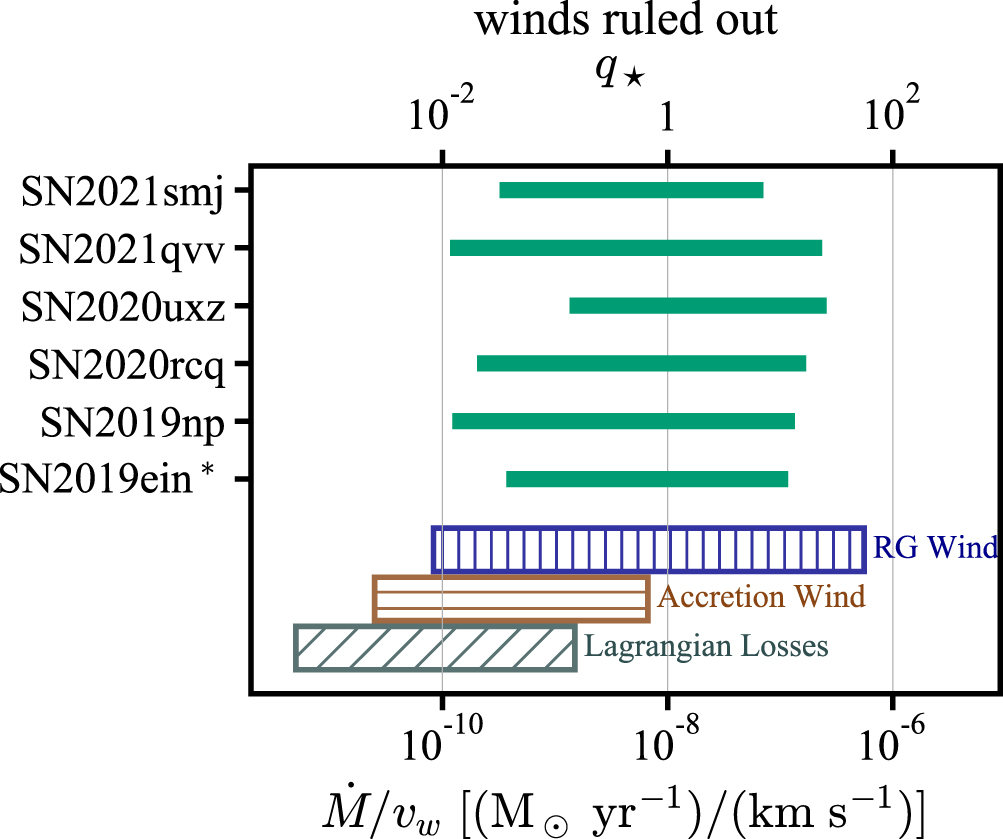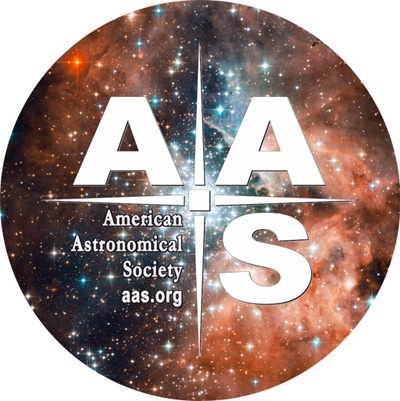8.16.23
Kerry Hensley

The supernova remnant SNR 0509-67.5 as seen by the Hubble Space Telescope. [J. Hughes (Rutgers University)/NASA, ESA, and the Hubble Heritage Team (STScI/AURA)]
In astronomy, not detecting something can tell us something useful. A recent article details a radio search for six supernovae that resulted in no detections — but still gives us hints about the companions of these exploding stars.
How Stars Explode
Supernovae happen in two main ways. In the first, a massive star loses its battle with gravity, and its outer layers rebound off its collapsed core in a massive explosion. In the second, an evolved low- to intermediate-mass star experiences pulsations that cause its outer layers to gently waft off into space, leaving behind its core as a white dwarf. If the white dwarf has a binary companion, the companion can donate material to the white dwarf through winds, accretion, or a collision. If the white dwarf gains too much mass, its core ignites and the star explodes.

Researchers suspect that nearly any type of star, from compact white dwarfs to puffed-up supergiants, can donate mass to a white dwarf and trigger a supernova. Which stars actually do is an active area of research, especially since these explosions are useful cosmic distance markers. But how can we tell from the aftermath of the explosion what kind of star was involved?
A Rapid Radio Search
When a star donates mass to its white dwarf companion, some of that gas remains in the space between the two stars, and the distribution of the gas can tell us about the type of companion star; for example, the billowing stellar winds of a supergiant should create an extended region of low-density gas. When a supernova’s shock wave collides with and compresses this gas, it generates synchrotron radiation from electrons traveling in helical paths around magnetic field lines. Synchrotron radiation is produced even when the supernova collides with very low-density material that would be impossible to see through other means.

Diagram of synchrotron emission, arising from an electron moving along a helical path around an ordered magnetic field. The Lorentz force causing the acceleration a is perpendicular to the magnetic field vector B, and both are also perpendicular to the circular component of the electron’s velocity v. The radiation is concentrated in a beamwidth of ∼ 1/γ radians.
Emma Alexander 2022
Chelsea Harris (Michigan State University) and collaborators performed a search for synchrotron radiation from six nearby supernovae that had been detected at optical wavelengths. Judging by the evolution of their optical light curves, these supernovae all resulted from exploding white dwarfs with mass-donating stellar companions. However, the team found no radio emission to accompany the rapidly fading optical light of any of the supernovae in their sample.

Non-detections of the six supernovae rule out winds with the parameters spanned by the green bars. [Harris et al. 2023]
Winds, Shocks, and Shells
By modeling how much radio emission we’d expect to see from various distributions of circumstellar gas, the team was able to rule out the presence of low-density stellar winds from a supergiant companion. The non-detections also ruled out most winds due to accretion of material onto the white dwarf.
As part of their investigation, Harris and collaborators also modeled the expected synchrotron emission from a shock wave colliding with a dense shell of circumstellar gas. This scenario might arise when a pre-supernova white dwarf undergoes one or more novae before the ultimate explosion. Unexpectedly, the team found that these dense shells probably don’t produce a detectable amount of synchrotron emission. While radio observations are a powerful tool to study circumstellar gas, these shells might make themselves known on the other side of the electromagnetic spectrum, with fleeting bursts of X-rays or gamma rays.
Citation
Radio Observations of Six Young Type Ia Supernovae, C. E. Harris et al 2023 ApJ 952 24.
https://iopscience.iop.org/article/10.3847/1538-4357/acd84f/pdf
See the science paper for instructive material with images.
Tags
“What We Learn by Not Detecting Supernovae”
AAS NOVA
Astronomy
Astrophysics
Basic Research
Cosmology
See the full article here .
Comments are invited and will be appreciated, especially if the reader finds any errors which I can correct. Use “Reply”.

five-ways-keep-your-child-safe-school-shootings
Please help promote STEM in your local schools.

The mission of the American Astronomical Society is to enhance and share humanity’s scientific understanding of the Universe.
The Society, through its publications, disseminates and archives the results of astronomical research. The Society also communicates and explains our understanding of the universe to the public.
The Society facilitates and strengthens the interactions among members through professional meetings and other means. The Society supports member divisions representing specialized research and astronomical interests.
The Society represents the goals of its community of members to the nation and the world. The Society also works with other scientific and educational societies to promote the advancement of science.
The Society, through its members, trains, mentors and supports the next generation of astronomers. The Society supports and promotes increased participation of historically underrepresented groups in astronomy.
The Society assists its members to develop their skills in the fields of education and public outreach at all levels. The Society promotes broad interest in astronomy, which enhances science literacy and leads many to careers in science and engineering.
Adopted June 7, 2009
The society was founded in 1899 through the efforts of George Ellery Hale. The constitution of the group was written by Hale, George Comstock, Edward Morley, Simon Newcomb and Edward Charles Pickering. These men, plus four others, were the first Executive Council of the society; Newcomb was the first president. The initial membership was 114. The AAS name of the society was not finally decided until 1915, previously it was the “Astronomical and Astrophysical Society of America”. One proposed name that preceded this interim name was “American Astrophysical Society”.
The AAS today has over 7,000 members and six divisions – the Division for Planetary Sciences (1968); the Division on Dynamical Astronomy (1969); the High Energy Astrophysics Division (1969); the Solar Physics Division (1969); the Historical Astronomy Division (1980); and the Laboratory Astrophysics Division (2012). The membership includes physicists, mathematicians, geologists, engineers and others whose research interests lie within the broad spectrum of subjects now comprising contemporary astronomy.
In 2019 three AAS members were selected into the tenth anniversary class of TED Fellows.
The AAS established the AAS Fellows program in 2019 to “confer recognition upon AAS members for achievement and extraordinary service to the field of astronomy and the American Astronomical Society.” The inaugural class was designated by the AAS Board of Trustees and includes an initial group of 232 Legacy Fellows.
